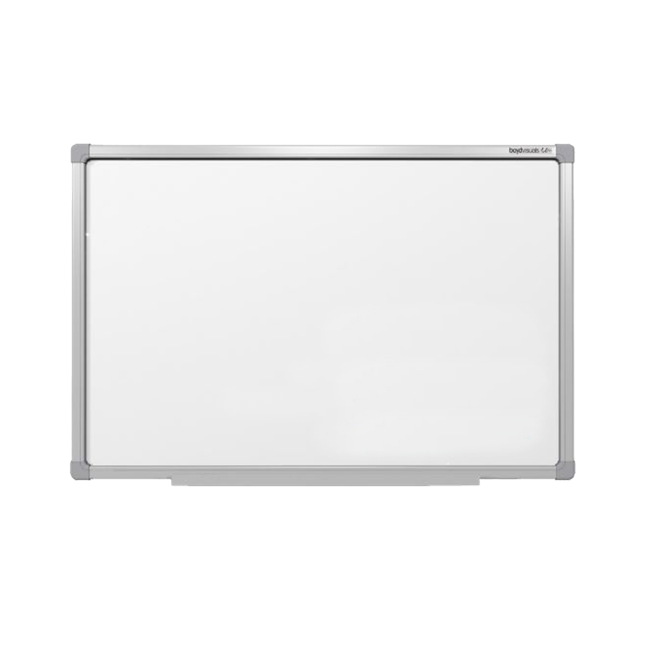Whiteboards - crucial equipment in corporate settings!
furnware nz
. 4 min read
Whiteboards in NZ are a crucial piece of equipment in modern corporate settings, bridging the gap between traditional communication methods and innovative digital tools.

In the ever-evolving landscape of modern corporate environments, one tool has remained consistently essential - Whiteboards in NZ. Though it might seem like a simple, even old-fashioned, piece of equipment in today’s technology-driven offices, the whiteboard continues to play a pivotal role in business operations, team collaboration, strategic planning, and innovation. Its importance has not diminished with time; instead, it has adapted and flourished alongside digital tools, becoming a cornerstone of effective communication and productivity in corporate settings.
Whiteboards are no longer just large, erasable writing surfaces mounted on conference room walls. Today’s versions are mobile, digital, interactive, and even cloud-connected. Yet, at their core, they serve the same fundamental purpose: to provide a visual platform for expressing ideas, planning projects, and fostering collaboration. Their simplicity is their greatest strength, offering immediate access to a blank canvas ready for brainstorming, teaching, or problem-solving.
One of the key reasons whiteboards are so essential in modern corporate settings is their role in facilitating communication. In meetings or team huddles, they allow participants to visualise concepts in real-time. Diagrams, flowcharts, bullet points, and quick sketches can all be created on the fly, enabling clearer understanding across diverse teams. Visual learning enhances retention and helps break down complex ideas, making whiteboards a valuable tool for inclusive and efficient communication.
In addition to improving communication, whiteboards are powerful tools for collaboration. Modern workplaces thrive on teamwork, and the ability to quickly jot down ideas, build on each other’s contributions, and iterate on concepts is crucial. Whiteboarding sessions encourage active participation from team members, promoting a sense of ownership and engagement.
Strategic planning and project management also benefit greatly from whiteboard use. Whether mapping out timelines, defining workflows, or outlining key performance indicators, whiteboards offer a dynamic and flexible way to visualise and manage complex projects. Teams can adjust plans in real-time, erase and modify tasks, and immediately reflect new directions or feedback. Unlike static digital tools, the tactile nature of writing and drawing on a whiteboard can spark creativity and a sense of spontaneity.
Technology has further elevated the utility of whiteboards through digital integration. Interactive whiteboards - also known as smartboards - allow users to save, print, and share content electronically. They support video conferencing platforms, enabling real-time collaboration between remote teams. This makes them indispensable in hybrid work environments, where bridging the gap between physical and virtual spaces is critical. Smart whiteboards come equipped with touch recognition, styluses, and connectivity features that blend traditional brainstorming with modern digital workflows.
Whiteboards are also important in training and development. Corporate learning sessions, onboarding programs, and skill-building workshops often rely on whiteboards for explanations and demonstrations. Trainers can use them to break down information, highlight key points, and engage participants in interactive activities. The flexibility of the medium allows trainers to adapt their methods based on real-time feedback and questions from participants.
Another overlooked benefit of whiteboards is their contribution to workplace culture and morale. Many companies encourage employees to use whiteboards for informal notes, motivational quotes, or even light-hearted doodles. These boards become a canvas for personality and creativity, fostering a more engaging and personalised work environment. This seemingly minor feature contributes to building a positive, collaborative, and inclusive workplace culture.
Despite the prevalence of digital tools, apps, and cloud-based collaboration platforms, whiteboards remain irreplaceable in many ways. They offer a level of immediacy, interactivity, and tactile engagement that screens often fail to match. Moreover, they don’t require logins, software updates, or battery life. Their ease of use and accessibility make them a timeless tool for professionals across industries.
Summing up, whiteboards in NZ, though simple in design, continue to be a crucial piece of equipment in modern corporate settings. They bridge the gap between traditional communication methods and innovative digital tools, offering flexibility, clarity, and enhanced collaboration.

